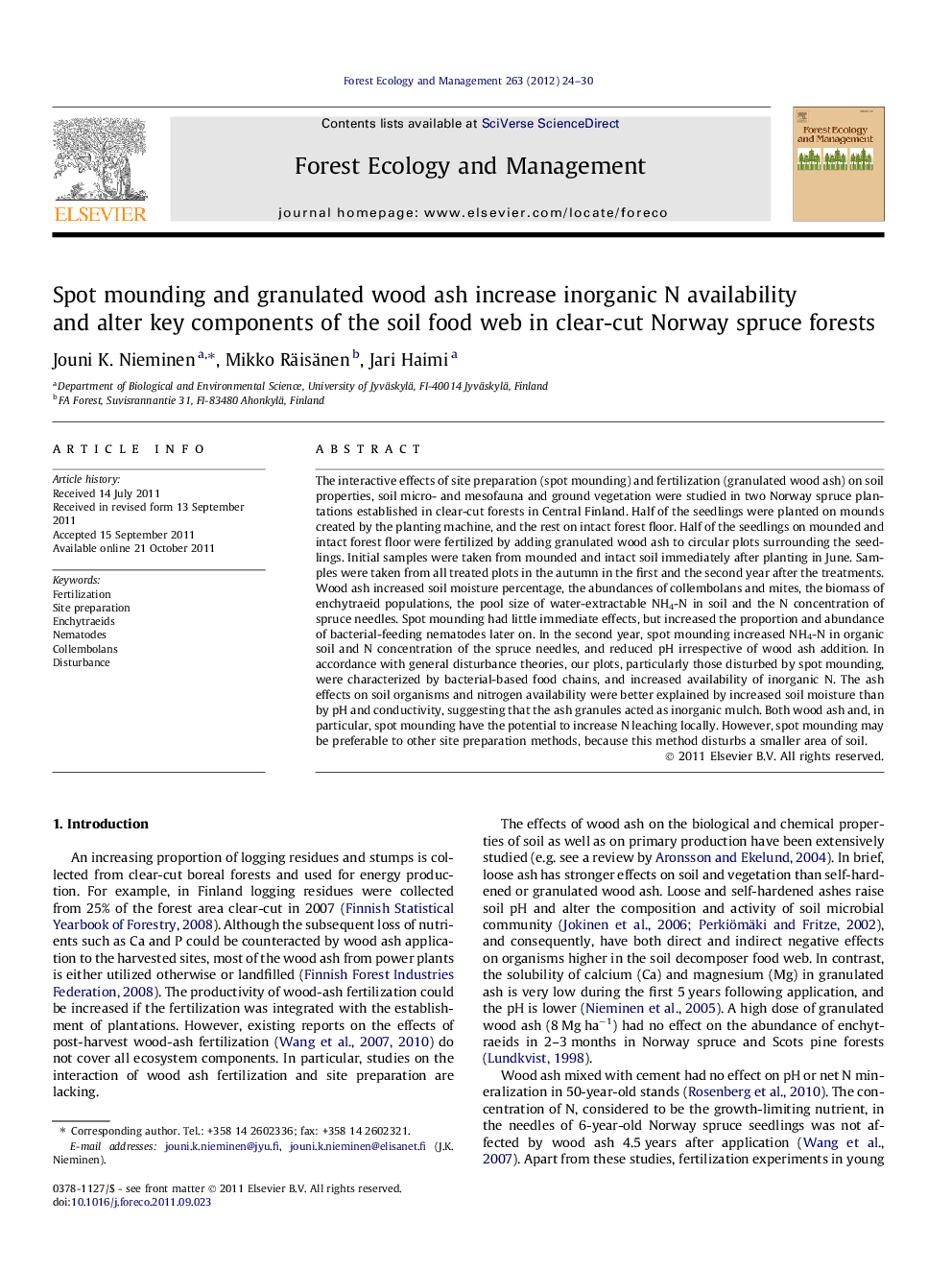| Article ID | Journal | Published Year | Pages | File Type |
|---|---|---|---|---|
| 87748 | Forest Ecology and Management | 2012 | 7 Pages |
The interactive effects of site preparation (spot mounding) and fertilization (granulated wood ash) on soil properties, soil micro- and mesofauna and ground vegetation were studied in two Norway spruce plantations established in clear-cut forests in Central Finland. Half of the seedlings were planted on mounds created by the planting machine, and the rest on intact forest floor. Half of the seedlings on mounded and intact forest floor were fertilized by adding granulated wood ash to circular plots surrounding the seedlings. Initial samples were taken from mounded and intact soil immediately after planting in June. Samples were taken from all treated plots in the autumn in the first and the second year after the treatments. Wood ash increased soil moisture percentage, the abundances of collembolans and mites, the biomass of enchytraeid populations, the pool size of water-extractable NH4-N in soil and the N concentration of spruce needles. Spot mounding had little immediate effects, but increased the proportion and abundance of bacterial-feeding nematodes later on. In the second year, spot mounding increased NH4-N in organic soil and N concentration of the spruce needles, and reduced pH irrespective of wood ash addition. In accordance with general disturbance theories, our plots, particularly those disturbed by spot mounding, were characterized by bacterial-based food chains, and increased availability of inorganic N. The ash effects on soil organisms and nitrogen availability were better explained by increased soil moisture than by pH and conductivity, suggesting that the ash granules acted as inorganic mulch. Both wood ash and, in particular, spot mounding have the potential to increase N leaching locally. However, spot mounding may be preferable to other site preparation methods, because this method disturbs a smaller area of soil.
► Spot mounding increased inorganic nitrogen availability in clear-cut areas. ► Spot mounding increased the proportion of bacterial-feeding nematodes. ► Granulated wood ash increased soil moisture and soil animal biomasses.
